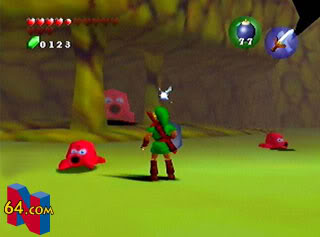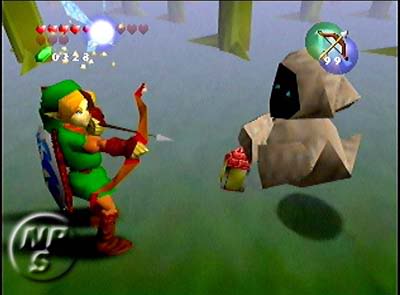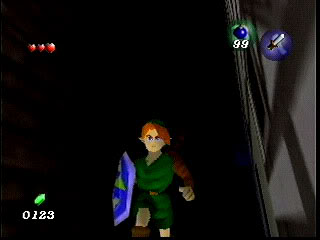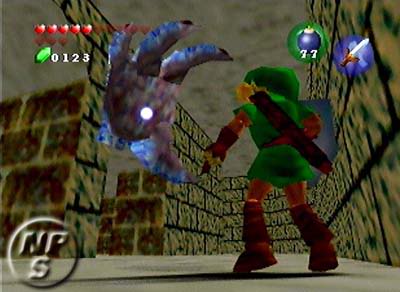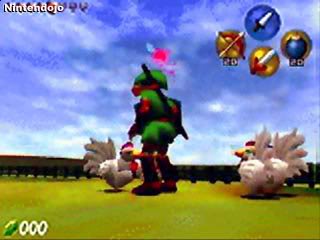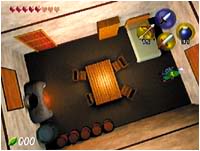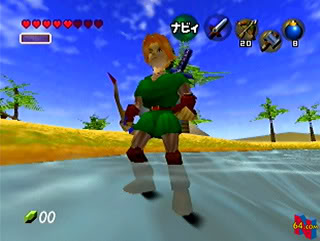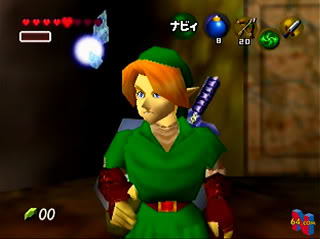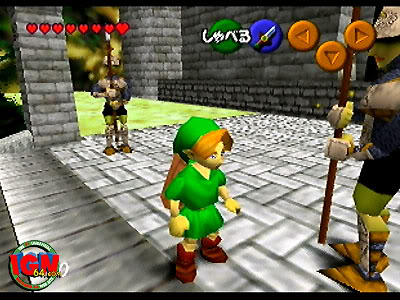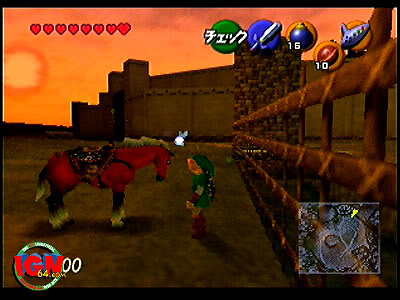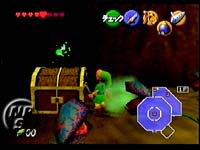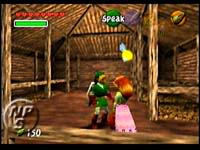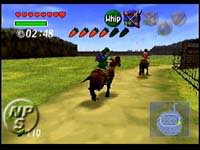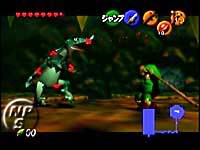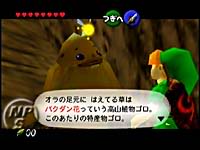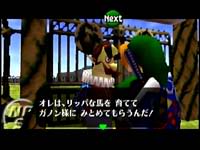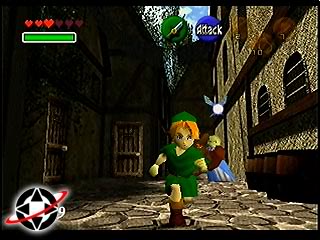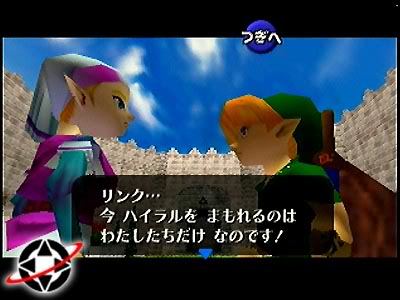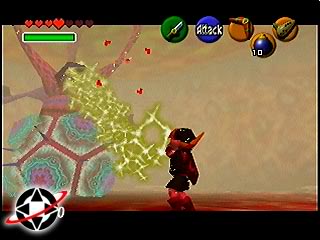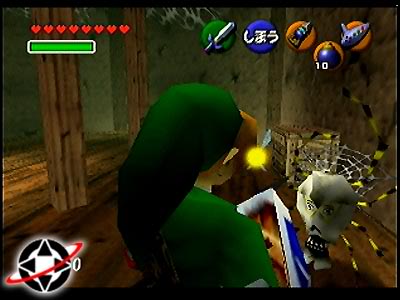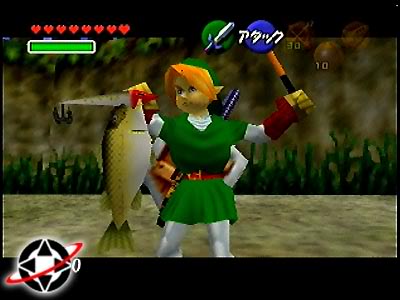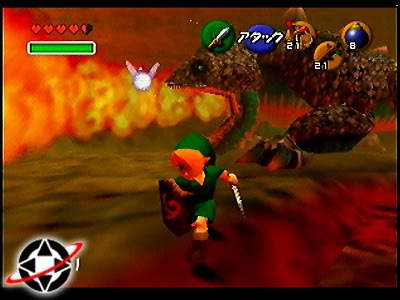This era saw some major changes to
the interface design. For starters, the A button now could only
have the sword equipped. Also, the backgrounds for the buttons
became much plainer, no longer using the gradient design that they had
used for every previous version (perhaps because it was around this
time that they realized they would be using a regular cartridge and not
a disk). The B button was a bit more intelligent now, capable of
displaying many more commands (though it still required Navi's command
if it couldn't show anything else). Many more items were added to
Link's arsenal as well, but the medallions could no longer be equipped.
Lots of interesting stuff happens with the interface at this point,
most of it similar to the final version of the game. For
starters, we now have the mini-map, although we see several different
kinds. There's the topographical map in the upper-lefthand
screenshot, the flat, labeled map in the upper-right, and a map more
like our own in the lower-right (though it's probably just a very
uninteresting topographical map). Also, we see two-digit rupee
counters, different rupee counts (00, 150, and 110), no ammunition
counter for the slingshot in the upper-right, and the carrot counter
for horses. Also of interest is the timer and the English text.
Something a little unusual was Navi's many different colors. With
enemies, Navi turned red. Characters made her turn yellow,
objects of interest were green. Before, she also turned into
magenta. Of course, this scheme actually lasted for a long time,
and so during this time the targeting markers weren't the spinning
yellow arrows we're used to, but spinning red brackets.


